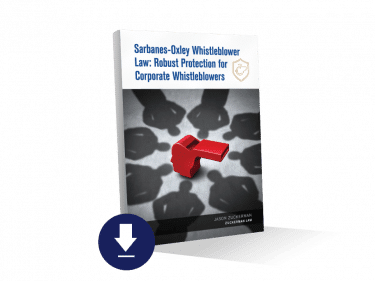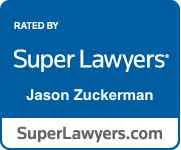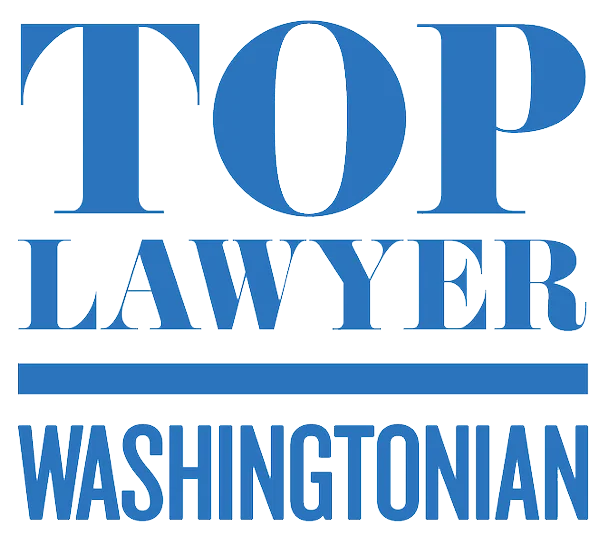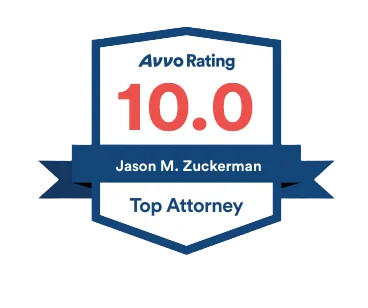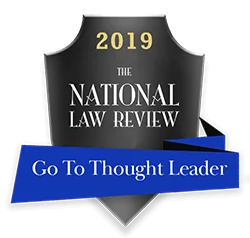SOX whistleblowers not required to prove retaliatory motive
A SOX whistleblower need not demonstrate the existence of a retaliatory motive on the part of the employer to establish that protected activity was a contributing factor to the personnel action. But evidence of a retaliatory motive, e.g., statement of retaliatory animus or resentment of the complainant’s whistleblowing, is relevant circumstantial evidence to prove retaliation.
In Halliburton, Inc. v. Admin. Review Bd., 771 F.3d 254, 259-62 (5th Cir. 2014), the Fifth Circuit rejected the employer’s assertion that a SOX whistleblower must prove a “wrongfully-motivated causal connection,” holding that a “contributing factor” is “any factor, which alone or in combination with other factors, tends to affect in any way the outcome of the decision.” Id. (quoting Allen v. Admin. Review Bd., 514 F.3d at 476 n.3). In addition, the court relied on a Federal Circuit decision holding that “a whistleblower need not demonstrate the existence of a retaliatory motive on the part of the [employer] in order to establish that his [protected conduct] was a contributing factor to the personnel action.” Id. at 263 (emphasis added and alterations in original) (quoting Marano v. Dep’t of Justice, 2 F.3d 1137, 1141 (Fed. Cir. 1993)).
In a seminal decision construing “contributing factor” causation, the Department of Labor Administrative Review Board held:
We want to reemphasize how low the standard is for the employee to meet, how “broad and forgiving” it is. “Any” factor really means any factor. It need not be “significant, motivating, substantial or predominant”—it just needs to be a factor. The protected activity need only play some role, and even an “[in]significant” or “[in]substantial” role suffices.
Id. at 53 (citations omitted). Recognizing that “employees are likely to be at a severe disadvantage in access to relevant evidence,” the ARB noted that causation can be proven using circumstantial evidence. Such evidence can include “motive, bias, work pressures, past and current relationships of the involved parties, animus, temporal proximity, pretext, shifting explanations, and material changes in employer practices, among other types of evidence.” Bobreski v. J. Givoo Consultants, Inc., ARB No. 13-001, ALJ No. 2008-ERA-3 (ARB Aug. 29, 2014).
Similarly, the Ninth Circuit held in Tamosaitis v. URS Inc., a case construing an analogous whistleblower protection law for nuclear workers, that “contributing factor” causation does not require a showing of retaliatory motive:
Under this framework, the presence of an employer’s subjective retaliatory animus is irrelevant. All a plaintiff must show is that his “protected activity was a contributing factor in the adverse [employment] action.” 29 C.F.R. § 24.104(f)(1). The relevant causal connection is not between retaliatory animus and personnel action, but rather between protected activity and personnel action. As a result, there is no meaningful distinction between an employer who takes action based on its own retaliatory animus and one that acts to placate the retaliatory animus of a customer. Either way, the fact that the employee engaged in protected activity is the cause of the action taken against him.
The DOL ARB has held that “‘[t]he contributing factor that an employee must prove is intentional retaliation prompted by the employee engaging in protected activity.’” Thorstenson v. BNSF Ry. Co., ARB Nos. 2018-0059, 2018-0060, ALJ No. 2015-FRS-00052, slip op. at 8 (Nov. 25, 2019) (quoting Kuduk v. BNSF Ry. Co., 768 F.3d 786, 791 (8th Cir. 2014)). In satisfying this standard, the Board has held that “an employee need not prove retaliatory animus, or motivation or intent, to prove that this protected activity contributed to the adverse employment action at issue.” Rathburn v. The Belt Ry. Co. of Chicago, ARB No.16-036, ALJ No. 2014-FRS-35, PDF at 8 (ARB Dec. 8, 2017) (citing DeFrancesco v. Union R.R. Co., ARB No. 10-114, ALJ No. 2009-FRS-009, slip op. at 6 (ARB Feb. 29, 2012)); Riley v. Dakota, Minnesota & E. R.R. Corp., ARB Nos. 16-010, 16-052, ALJ No. 2014-FRS-044, 2019 WL 4170436, *4 (ARB Jul. 6, 2019) (declining to follow Kudak v. BNSF Ry. Co., 768 F.3d 786, 792 (8th Cir. 2014), which required a complainant to prove intentional retaliation); see Frost v. BNSF Ry. Co., 914 F.3d 1189, 1195 (9th Cir. 2019) (“the only proof of discriminatory intent that a plaintiff is required to show is that his or her protected activity was a ‘contributing factor’ in the resulting adverse employment action”); but see Armstrong v. BNSF Ry. Co., 880 F.3d 377, 382 (7th Cir. 2018) (“while a FRSA plaintiff need not show that retaliation was the sole motivating factor in the adverse decision, the statutory text requires a showing that retaliation was a motivating factor”).
Zuckerman Law Amicus Curiae Brief Filed on Behalf of Senator Wyden and Representative Speier Clarifying the Contributing Factor Causation Standard
In July 2021, whistleblower protection law firm Zuckerman Law filed this amicus curiae brief in the Second Circuit concerning the appropriate causation standard under federal whistleblower protection laws.
AMICUS CURIAE BRIEF OF SENATOR RON WYDEN AND REPRESENTATIVE JACKIE SPEIER AND IN SUPPORT OF THE PLAINTIFF-APPELLEE-CROSS-APPELLANTGuide to Sarbanes-Oxley Whistleblower Protection
The whistleblower protection provision of the Sarbanes-Oxley Act provides robust protection to corporate whistleblowers, and indeed some SOX whistleblowers have achieved substantial recoveries. Earlier this year, a former in-house counsel at a biotechnology company recovered $11 million in a SOX whistleblower retaliation case alleging that the company fired him for disclosing violations of the Foreign Corrupt Practices Act.
On the fifteenth anniversary of SOX, leading whistleblower law firm Zuckerman Law released a free guide to the SOX whistleblower protection law: “Sarbanes-Oxley Whistleblower Protection: Robust Protection for Corporate Whistleblowers.” The guide summarizes SOX whistleblower protections and offers concrete tips for corporate whistleblowers based on lessons learned during years of litigating SOX whistleblower cases.
The goal of the guide is to arm corporate whistleblowers with the knowledge to effectively combat whistleblower retaliation, avoid the pitfalls that can weaken a SOX whistleblower case, and formulate an effective strategy to obtain the maximum recovery.
Experienced SOX Whistleblower Retaliation Lawyers
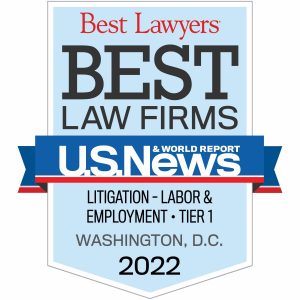
The whistleblower lawyers at Zuckerman Law have substantial experience litigating Sarbanes Oxley whistleblower retaliation claims and have achieved substantial recoveries for officers, executives, accountants, auditors, and other senior professionals.
To schedule a free preliminary consultation, click here or call us at 202-262-8959.
To learn more about whistleblower rewards or whistleblower protections, call the whistleblower lawyers at Zuckerman Law for a free consultation at 202-262-8959, or click here. And for information about the SEC’s Whistleblower Reward Program, download our free ebook SEC Whistleblower Program: Tips from SEC Whistleblower Attorneys to Maximize an SEC Whistleblower Award.
Protections for SEC Whistleblowers
SOX Whistleblower Attorneys
whistleblower_lawyers_012017_infographic


